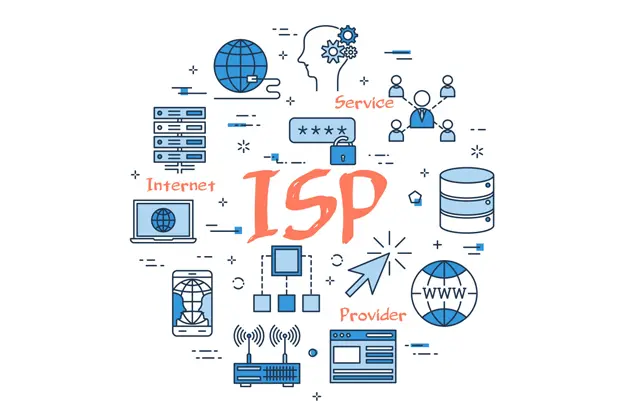Whether you’re working from home, streaming, gaming, or staying connected with friends and family, choosing the right internet service provider (ISP) can make a big difference in how smoothly your digital activities go.
With so many options available and difficult-to-digest technical jargon, the process can feel a bit overwhelming. That is exactly why I have created this guide to help you. I will be covering everything necessary, ranging from personal usage to hidden fees and more.
So, without much ado, let’s dive right into it.
1. Understand Your Internet Needs
When selecting an ISP, know how you and others at home use the internet. Your family’s online habits are crucial in determining the speed, bandwidth, and type of connection you’ll need:
- Know Your Usage
Are you a casual user who mostly checks emails and browses the web? Or do you rely on the internet for high-bandwidth tasks like 4K streaming, online gaming, or remote work? Knowing your primary activities will help you avoid overpaying for unnecessary features or, worse, ending up with insufficient service. - Bandwidth and Speed Requirements
Different activities require different levels of speed. For example, video conferencing and 4K streaming demand higher speeds, while basic browsing doesn’t. If you have a household of heavy users with multiple devices connected simultaneously, you’ll need a higher bandwidth plan. - Household Size and Devices
Consider the number of devices connected at a time, including phones, smart TVs, gaming consoles, and smart home gadgets. A household with two people working remotely and streaming content will have significantly different needs compared to someone living alone.
By understanding these factors, you can start narrowing down your options and focus on what matters most to your internet experience.
2. Check for the Types of Internet Connections
Understanding the different types of internet connections is also crucial when selecting a provider. Each type has its own strengths and limitations. So, knowing what type of internet in your area is available and how it aligns with your needs can save you from potential frustrations. I have listed all the major types of connections that are available in the US:
- Fiber
Fiber-optic internet is the fastest and most reliable option, offering speeds that exceed 1 Gbps with minimal latency. It’s ideal for high-demand users, gamers, and households with multiple devices streaming simultaneously. The downside? It’s not yet available everywhere and tends to be pricier than other options. - Cable
A common and affordable choice, cable internet provides good speeds for most households. It uses the same lines as cable TV, but during peak hours, speeds may slow down due to shared bandwidth. - DSL (Digital Subscriber Line)
DSL runs over standard phone lines and is typically slower than cable or fiber. However, it’s widely available and affordable, making it suitable for light internet use. - Satellite
Satellite internet is often the only option for rural areas. While it has decent download speeds, latency can be high, making it less ideal for activities like gaming or video calls. - Fixed Wireless and 5G
Fixed wireless delivers internet via radio signals from a tower to your home, while 5G is the newest mobile internet technology offering impressive speeds and low latency. Both options are growing in availability and can be excellent alternatives where wired connections are limited.
3. Look at these Key Factors to Evaluate ISPs
Choosing the right ISP involves more than just picking the fastest or cheapest option. Evaluating providers based on these critical factors will help you avoid frustrations down the line.
- Speed and Reliability
Speed might be the top concern, but reliability matters more (at least to me). An ISP that frequently experiences outages or slowdowns during peak hours can be frustrating. Look for providers that offer consistent speeds and uptime guarantees. Many ISPs include service level agreements (SLAs) for business plans, but even home users should check for customer feedback on reliability. - Latency and Ping
Latency, or the delay in data transfer, can significantly impact activities like gaming and video calls. A low ping time is especially important for real-time interactions. Fiber and cable connections typically offer lower latency compared to satellite or DSL. - Data Caps
Some ISPs impose data limits, restricting how much you can download or stream each month. If you’re a heavy user or rely on cloud-based services, avoid providers with low or hidden data caps. - Customer Service and Technical Support
Even the most reliable ISPs can experience issues. Providers with responsive and helpful customer service can make a huge difference when problems arise. Check reviews to see how quickly they resolve issues and whether their support staff is knowledgeable and easy to reach.
4. Consider the Following Cost Factors
Internet service isn’t just about speed or reliability – it’s also about finding a plan that fits your budget without hidden surprises.
- Plan Pricing and Value
Compare what different ISPs offer for their prices. A low-cost plan might seem appealing, but if it doesn’t meet your speed or usage needs, you could end up feeling frustrated. Look for plans that offer a balance between cost and features relevant to you. - Hidden Fees
Many providers charge extra for equipment rentals, installation, or activation. Some plans may also have early termination fees if you decide to cancel before the contract ends. Be sure to review the fine print to avoid unexpected expenses. - Promotional Pricing vs. Long-Term Costs
ISPs often advertise discounted rates for the first year, but these prices can rise significantly once the promotional period ends. When comparing options, factor in the regular rates to see the true cost of a plan over time. - Bundling Options
Many ISPs offer discounts if you bundle internet with TV or phone services. While these deals can be cost-effective, make sure you actually need the additional services to justify the added cost.
Make sure to carefully consider these cost factors to meet your performance needs along with the comfort of your budget.
5. Evaluate Based on the Reviews and Reputation
When choosing an ISP, looking at customer reviews and third-party rankings can provide valuable insights. Promotional materials might highlight the best aspects, but real customer experiences reveal what you can expect long term.
- Online Reviews and Ratings
Websites like Google Reviews, Trustpilot, and Better Business Bureau offer platforms where current and past customers share their experiences. Pay attention to trends in feedback – if a provider consistently gets poor ratings for customer service, reliability, or hidden charges, that’s a straight red flag. - Social Media and Forums
Platforms like Reddit and Facebook groups can offer unfiltered opinions from everyday users. Look for posts from people in your area to get an idea of how the ISP performs in your region, especially during peak hours or bad weather conditions. - Word of Mouth
Ask friends, family, or neighbors about their experiences with different providers. If they’ve been using the same ISP for years without issues, that can be a good sign. - Third-Party Rankings
Websites dedicated to ranking ISPs (such as CNET, Wirecutter, and PCMag) offer professional evaluations based on speed tests, customer service quality, and overall value. These rankings can give you an expert opinion, especially when choosing between several similar providers.
Frequently Asked Questions
Q: What’s the difference between download and upload speeds?
Download speed is how fast you receive data (like watching videos), while upload speed is how fast you send data (like uploading files or video calls). Both are important depending on your usage.
Q: How do I know if I’m getting the speeds I’m paying for?
Use a speed test tool to check if your actual speeds match what your ISP advertises. If they’re consistently lower, contact customer support for assistance.
Q: Should I rent or buy my modem and router?
Renting is convenient, but buying your own equipment saves you money in the long term. Just make sure it’s compatible with your ISP and supports the necessary speeds.
Q: What is the difference between static and dynamic IP addresses?
A static IP doesn’t change, which is ideal for hosting servers. A dynamic IP changes periodically, which is fine for regular home use and generally more cost-effective.










